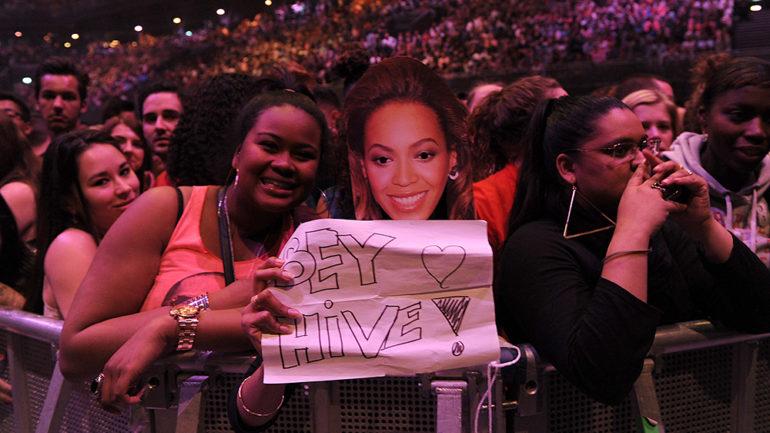The Big Shift: Why Record Companies Need to Pivot From a B2B to a B2C Model (Column)
By Tim Burke
LOS ANGELES (Variety.com) – It’s no secret that record companies haven’t historically been very good at consumer marketing. True, many once supported direct-to-consumer (DTC) or direct-to-fan (DTF) initiatives in which they sold albums and CDs directly to music buyers, but those sales rarely amounted to a significant revenue stream. The labels had little interest in upsetting the retail distributors they relied on, and the cost of entry was high. So rather than invest in functions outside of their core, they largely operated as B2B companies.
But times — and the industry — have changed. Unfortunately, the labels still haven’t properly developed critical B2C skills such as segmenting, understanding fans and learning how to engage them. Now that the recorded music business has completed the mega shift from an ownership to an access and consumption model, record company executives find themselves in an uncomfortable position. Most music today is distributed via a handful of companies (Spotify, Apple, Amazon), and no business in any sector wants to be beholden to just a few companies. So how do they secure relevance going forward?
Community Power
Record labels are now the only entities in the music ecosystem without a vibrant community of consumers with whom they direct relationship. Beyonce has her “Beyhive,” plus 131 million Instagram followers. Lady Gaga her Monsters, along with 79 million Twitter and 36 million Instagram followers. has over 100 million paying subscribers; Apple has at least 50 million, and 35 million. Rounding it out, LiveNation/Ticketmaster has a massive audience for events (along with first-party ticketing data).
Let’s be honest: in this industry, community equals power. The bigger your community, the more power you have. Conversely, the smaller your community, the less relevant you are, especially to artists and their 100 million-plus active fan bases with whom they’re in constant touch via social media. It’s not hard for them to get the word out when they release a new video.
The direct-to-fan channels controlled by the record labels are unfortunately of little use to their community-building efforts. To put it bluntly: record labels need to catch up fast if they want to retain relevance and optimize growth. Labels need to scale their marketing capabilities to target whole communities rather than single customers and they need to do this right now. Literally this very minute.
No Audience Is a Monolith
To my mind, the modern version of D2C or DTF marketing is direct-to-community marketing, which is possible for the simple reason that no audience is a monolith. Let me explain what I mean.
Even the most diehard fans have varied interests, passions and pursuits, which means they’re active members of multiple communities. Communities come in many shapes and forms: brand affinity, sports teams, political preference, religious preference, causes and so on. It’s the clustering of attributes — fashion loving, Michelle Obama loving, healthy eating, church going — that identify new communities. Marketing departments can create audience segments based on those combinations of attributes (for example: Beyonce fans/church goers) and use them in a wide variety of marketing initiatives. In fact, those audiences are the secret to building and engaging a community.
Understanding the distinct communities that are present within an artist’s audience can be the record label’s secret sauce for an artist. Specifically, by using AI and ML tools to parse data and make connections, the label can offer a higher level of service to their artists by curating and providing new audience insights. By upgrading their capabilities in these areas, labels will also reclaim some lost relevance. Artist management teams are savvier than ever, but rarely have the resources or willingness to invest in the types of tool sets that reveal insights into an artist’s multiple communities.
But that’s just the start. A deeper understanding of the unique communities within their artist’s varied audiences provides a roadmap for effective messaging and higher performing engagement strategies. When a marketing department understands the interests, language and passions of these communities, they can tailor the right messages at the right time and place so they resonate with the audience and inspire them to take action.
As AI/Machine Learning Costs Go Down, Now Is the Time to Jump In
This may sound a bit futuristic, but rest assured the future is here and it’s available to you right now. The world has seen significant advances in the kind of computing power needed to run machine learning and AI. From the mid-1990s on, the advances in speed have been extraordinary and there was a tipping point where suddenly the computers were so fast that AI and machine learning could be applied to a wide array of commercial applications, including community building for record companies. In fact, machine learning has become so mainstream, with new platforms and tools entering the market each quarter (AI-related funding significantly jumped 72% from 2017 to 2018).
For record companies, the timing couldn’t be better. In a world where the size and makeup of one’s circle is more relevant than ever, understanding an artist’s or brand’s affiliated communities drives the real business growth.
Tim Burke is the co-founder and CEO of Affinio , a marketing strategy platform that mines billions of relational network connections that exist within any given social audience to shed data-driven light on who each audience segment is and what they care most about. Follow him on Twitter at @t1mburke .

